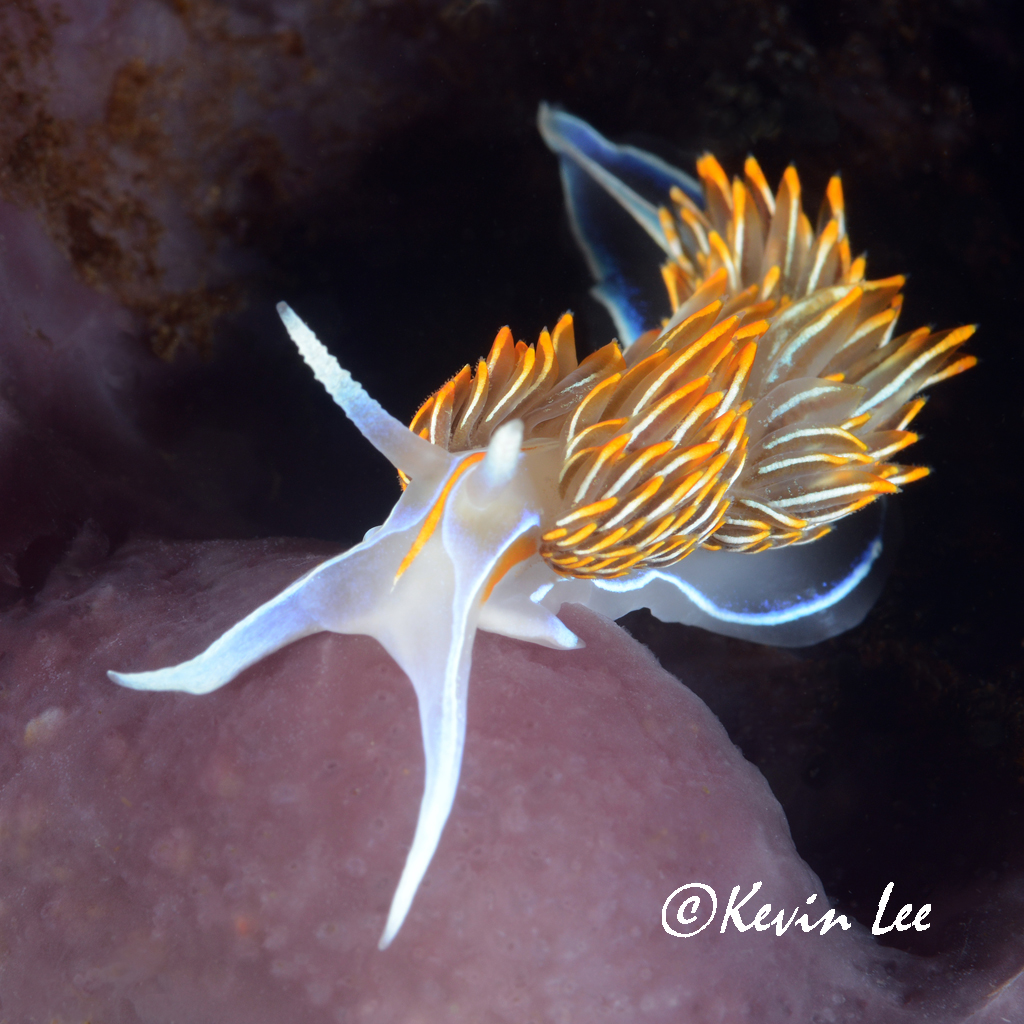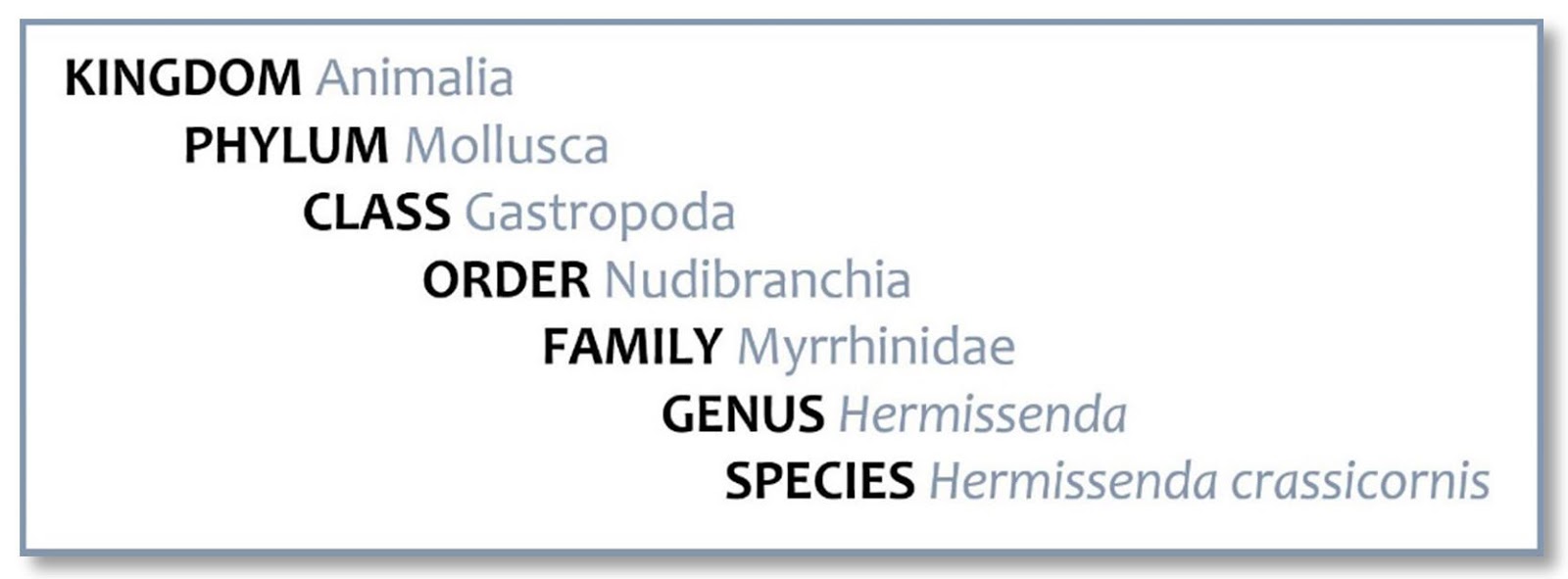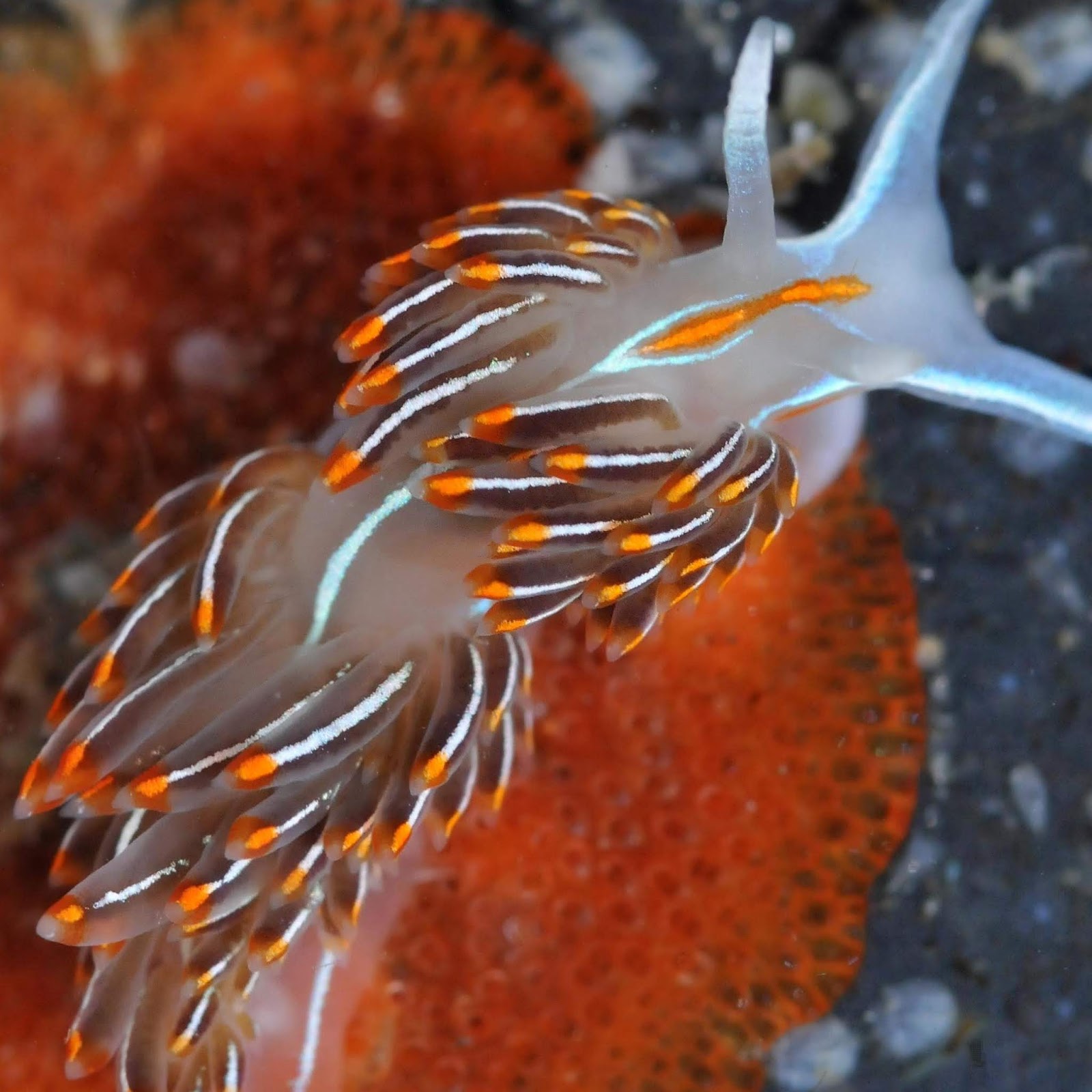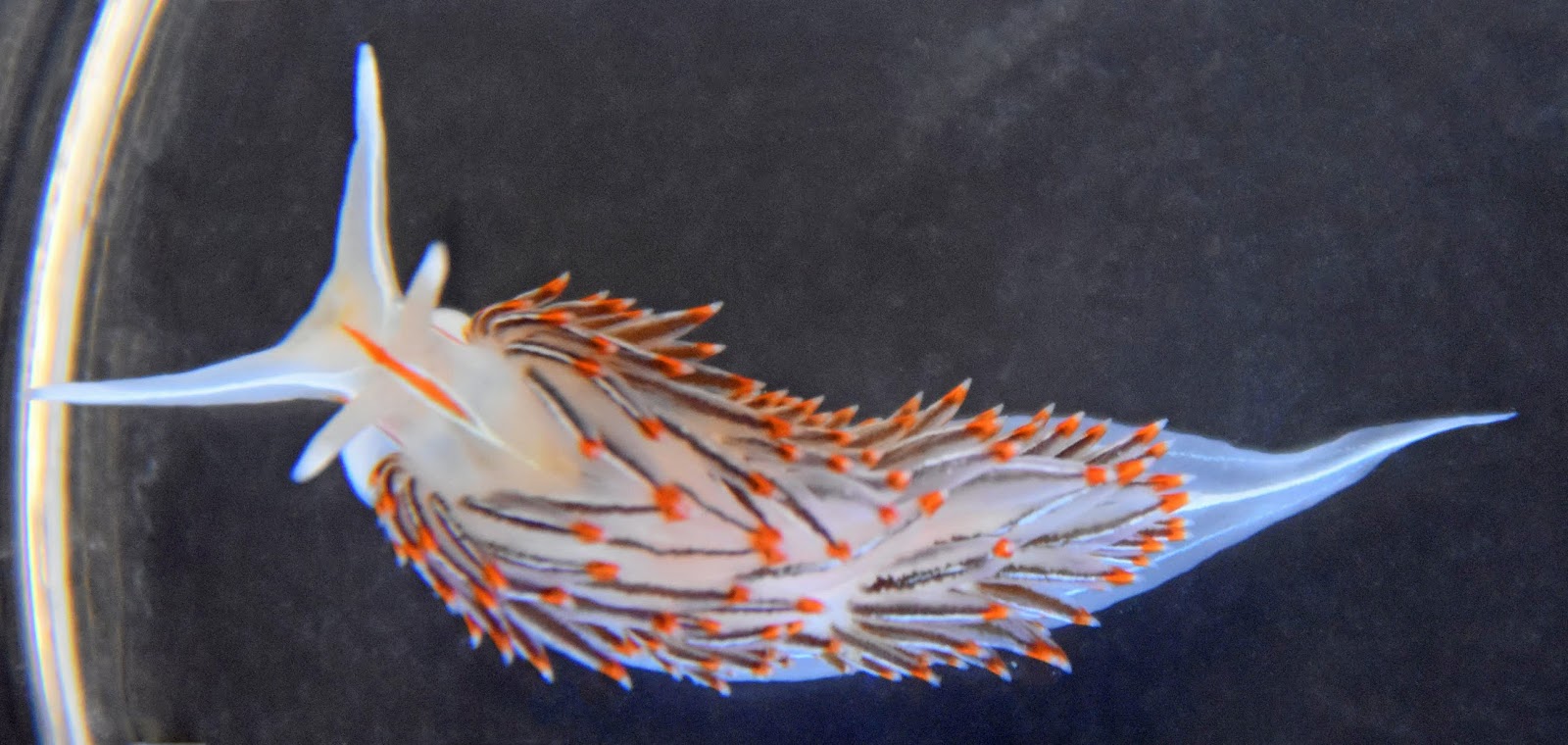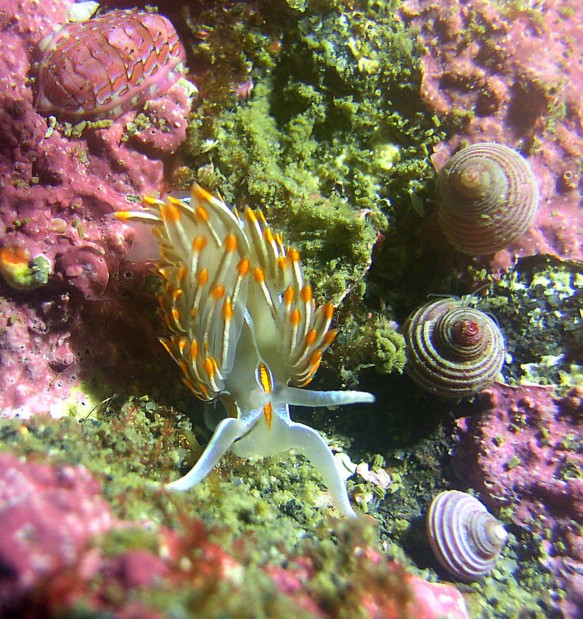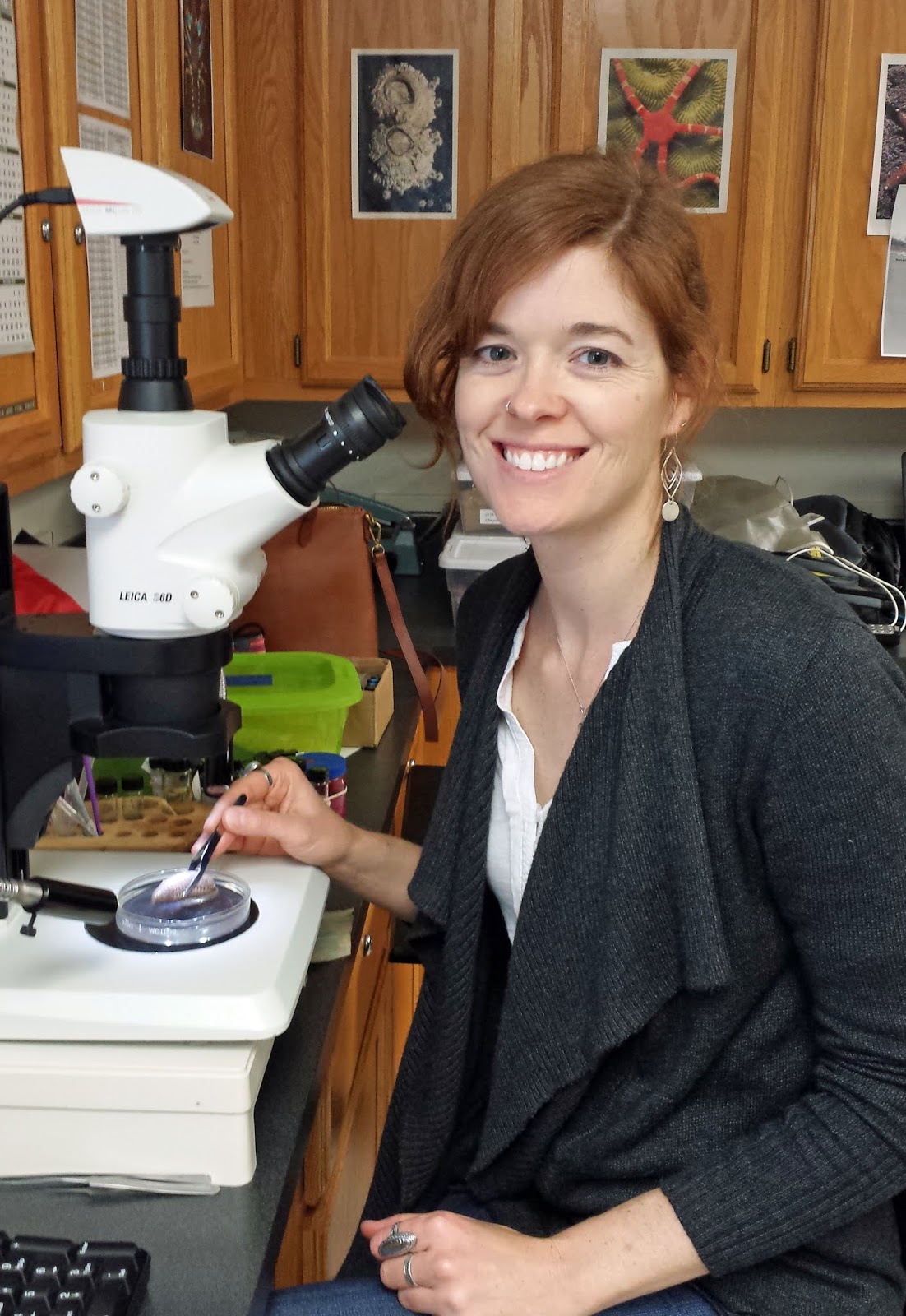Hermissenda crassicornis from Hurst Island, British Columbia. Photo courtesy of Kevin Lee, diverkevin.com.
This month’s aquatic critter looks like a luminous holiday spirit carrying dozens of flickering candles. Definitely don’t try this at home, no matter how festive the effect might be!
Glow your own way
Mistaken identity
Hermissenda crassicornis by Minette Layne, Seattle, Washington. This file was downloaded from Wikipedia and is licensed under the Creative Commons Attribution-Share Alike 2.0 Generic license.
To avoid confusion, the northern opalescent nudibranch is sometimes referred to as the “thick-horned nudibranch” in the area where the two species overlap. The “horns” are actually a pair of large tentacles, each with a tiny eye at the base. Behind the tentacles are a pair of sensory organs called rhinophores, used to “smell” prey. This species is so good at smelling that it can use the unique chemical signatures of its favorite prey species to pinpoint their locations — a skill known as chemotaxis.
Movable feast
Dorsal
These cnidarian prey contain a secret ingredient that is at the top of the nudibranch’s wish list — stinging cells called nematocysts. The nematocysts don’t hurt the sea slug, but pass directly through to its cerata, making it toxic and distasteful to potential predators. For this reason, it doesn’t have camouflage and doesn’t need it…the bright colors warn predators to nibble at their own risk!
Naughty or nice?
A northern opalescent nudibranch crawls across an encrusted rocky habitat amongst snails and chitons. Photo by Kirt Onthank, August 2007, wallawalla.edu.
Despite their violent tendencies, these feisty critters can have a positive impact on human lives by sacrificing their own. They are easily reared in labs and have been used extensively for biomedical and behavioral research, including learning and memory studies and studies on lead toxicity. Maybe every grinch has a softer side after all.
Critter of the Month
Dany Burgess is a benthic taxonomist, a scientist who identifies and counts the sediment-dwelling organisms in our samples as part of our Marine Sediment Monitoring Program. We track the numbers and types of species we see to detect changes over time and understand the health of Puget Sound. Dany Burgess


